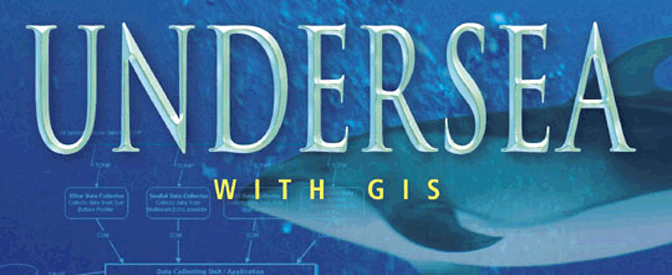 |
| Last update: October 20, 2001 |
| Home |
| Table of Contents |
| Book Cover |
| Theme Song |
| ArcNews Press Release |
| ESRI Press |
| Email the Editor |
FOREWORDSylvia EarleNational Geographic Explorer-in-Residence, founder & chairwoman of Deep Ocean Exploration & Research, Inc.
"The real voyage of discovery does not consist of seeking
new landscapes, but in having new eyes." Explorers from ages past, even from a few decades ago, would be dazzled by the precision with which it is now possible to determine where you are, whether on land, at sea, and even, most amazingly, under the sea. Surely, they would wonder at the extraordinary insights made possible as layers of data are superimposed on precise renderings of terrain, and would readily understand how, in the blink of a geographer's eye, geographic information systems (GIS) have become indispensable to city planners, farmers, businessmen, policy makers, scientists of all sorts, and almost anyone who wants or needs to evaluate the scope of human activity, Earth's natural processes, or their continuous interplay. "But what of the ocean," they might ask. "Navigating the surface is one thing, but what's going on below? Is it not possible to provide for the sea understanding comparable for what is being done for the land?" In fact, while more has been learned about the nature of the world's oceans in the past 25 years than during all preceding human history, most of that vast realm remains unknown, unexplored. While it is known that the sea contains 97% of the planet's water, governs climate and weather, generates most of the oxygen in the atmosphere, absorbs carbon dioxide, shapes planetary chemistry, and provides home for most of life on Earth, the aquatic two thirds of the planet has been largely neglected. But, as Dawn Wright makes clear in this remarkable and timely volume, a new era of ocean exploration is now underway. With it, there is a sense of urgency about developing an oceanic GIS, driven largely by the knowledge that the sea, cornerstone of Earth's life support system, is being altered significantly by what people are putting into it, and by the huge quantities of wildlife being extracted from it. Concerns are growing about the collapse of once numerous species of fish and marine mammals, about polluted beaches, toxic algal blooms, "dead zones," and increased occurrence of water-borne diseases. Just as on land, GIS in the sea can facilitate identification of problem areas and help point the way toward solutions. In an effort to help safeguard the natural, historic and cultural heritage of the United States, 13 marine sanctuaries and a large expanse of coral reefs in the northwestern Hawaiian Islands have been designated for protection, a counterpart to the nearly 400 National Parks that have been established for the land. Worldwide, more than 2000 marine parks and preserves have been created in recent times in response to the growing concerns about the declining health of the ocean -- and the consequences to humankind. To assess the benefits, determine critical areas, and better manage human activity in the sea, it is vital to know more about the nature of the ocean and how it changes over time. Classroom globes convey at a glance that the planet is round and mostly blue, but knowledge of the Earth as an ever-changing, living system vulnerable to the actions of humankind first came into focus with the advent of high-flying satellites, spacecraft and exquisite sensors that gather and feed data to increasingly sophisticated computers -- and increasingly well informed human minds. A growing array of ocean "observatories," some tethered as buoys, some drifting, others attached by cables to land stations, are beginning to fill in some of the enormous gaps in our knowledge of ocean temperature, salinity, water chemistry and biological activity. Acoustic tools make it possible to "view" and map the ocean floor through sound transmission, reflection and refraction, while mobile systems -- remotely operated vehicles, autonomous unmanned systems and manned submersibles, as well as thousands of diving human observers, provide vital details.
Some say the most important, influential and meaningful images to emerge from
the 20th century are those of Earth from afar, a brilliant blue and white
sphere shining against the dark infinity of space. Perhaps the most
important, influential and meaningful images of the 21st century will be
derived from millions of data points, a comprehensive view from within Earth's
blue realm that will help us determine how to find an enduring place for
ourselves within the natural systems that sustain us.
|
 http://dusk.geo.orst.edu/undersea/foreword.html
http://dusk.geo.orst.edu/undersea/foreword.html